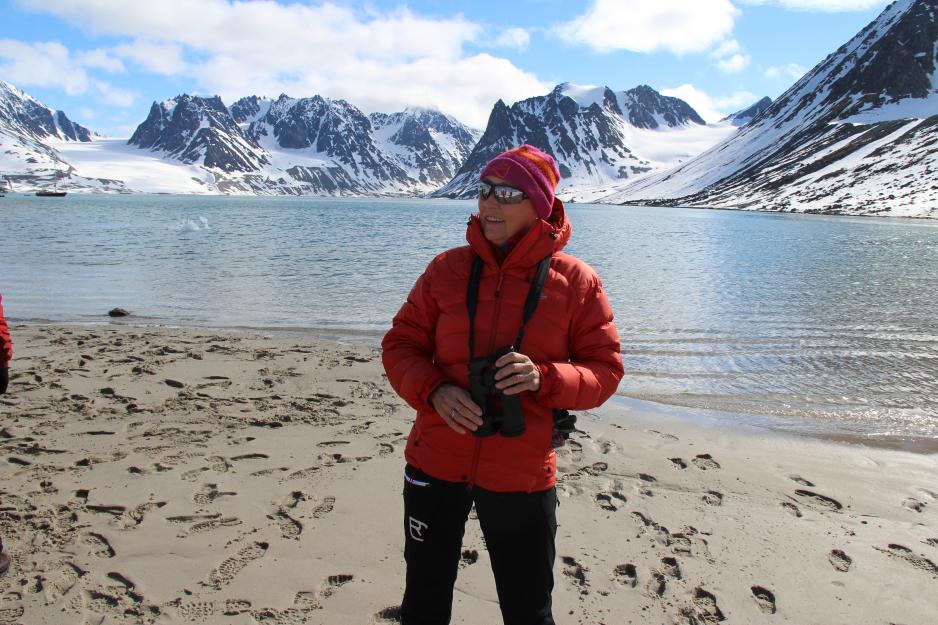A team of four scientists will embark on the journey on Tuesday to India’s research station in the NyAlesund town on the Brogger peninsula where research institutes from 10 countries have laboratories. The four members of the team, all first-timers to the Arctic, are Athulya R of NCPOR-Goa, Girish B S of Raman Research Institute-Bengaluru, Prashant Rawat of IIT-Mandi and Surendra Singh of Indian Institute of Tropical Meteorology, Pune.
Earth Sciences Minister Kiren Rijiju on Monday flagged off India’s first-ever winter science expedition to the Arctic region in a bid to maintain round-the-year presence at the the Himadri research station in Svalbard in Norway. A team of four scientists will embark on the journey on Tuesday to India’s research station in the NyAlesund town on the Brogger peninsula where research institutes from 10 countries have laboratories.
The four members of the team, all first-timers to the Arctic, are Athulya R of NCPOR-Goa, Girish B S of Raman Research Institute-Bengaluru, Prashant Rawat of IIT-Mandi and Surendra Singh of Indian Institute of Tropical Meteorology, Pune.
Ny-Alesund is the world’s northernmost settlement, situated at 79 degrees north latitude in the north-western region of Spitsbergen, Svalbard.
“In this maiden winter expedition, our scientists are poised to unravel further mysteries and push the boundaries of scientific knowledge about our ‘Climate & Planet’,” Rijiju said.
“The Ministry of Earth Sciences (MoES) will make necessary budgetary and other allocations, provide administrative support for the winter expeditions to the Arctic, which will now on, be regularly undertaken annually,” Rijiju said.
Earth Sciences Secretary M Ravichandran, National Centre for Polar Ocean Research Director Thamban Meloth and India Meteorological Department Director General Mrutyunjay Mohapatra, among others, were present at the flagging-off ceremony here.
“As we venture into uncharted territory, India assumes a global role in Arctic exploration, contributing to the scientific community at large,” Rijiju said.
He termed the expedition “historic” and said it held immense significance as India navigated the Arctic’s critical influence on global climate, sea levels and biodiversity for the first time.
“This is the first winter expedition to the Arctic. The team of scientists will stay at the research station at NyAlesund for 30 days and then will be replaced by another team,” a senior official said.
He said India will now have a year-long presence at the research station in the Arctic region, as it has in the Antarctic near the South Pole.
India launched its Arctic research programme in 2007 with a focus on climate change in the region with the objective of studying connections between Arctic climate and Indian monsoon.
The government had unveiled the Arctic Policy last year, sharing plans to have more research stations and satellite ground stations in the region.
Norwegian agencies have extended logistical and other support to the visiting Indian team.
“The Norwegian government has shown faith in Indian scientists and our presence during the winter will add value. Scientists and young students of science will have to play a major role in making India a developed nation. India is entering many frontiers by making its presence on the moon, in the deep ocean and the polar region,” said Rijiju.
Indian scientists have carried out more that 200 expeditions to the Arctic since the first visit in 2007. However, these expeditions have been during the summer months.
Since India set up its research station Himadri in Svalbard region of Norway, scientists have been maintaining presence for 180 days per year.
The NCPOR director said India has ambitious plans to strengthen its research capabilities in the polar region and expand studies to Greenland.
In the summer of this year, Meloth said observations have begun in the Canadian Arctic region and similar explorations are underway for the Greenland area at Station Nord located at 82 deg North on the latitude.
Indian scientists have produced over 160 research papers in peer-reviewed journals based on observations carried out in the Arctic region.



